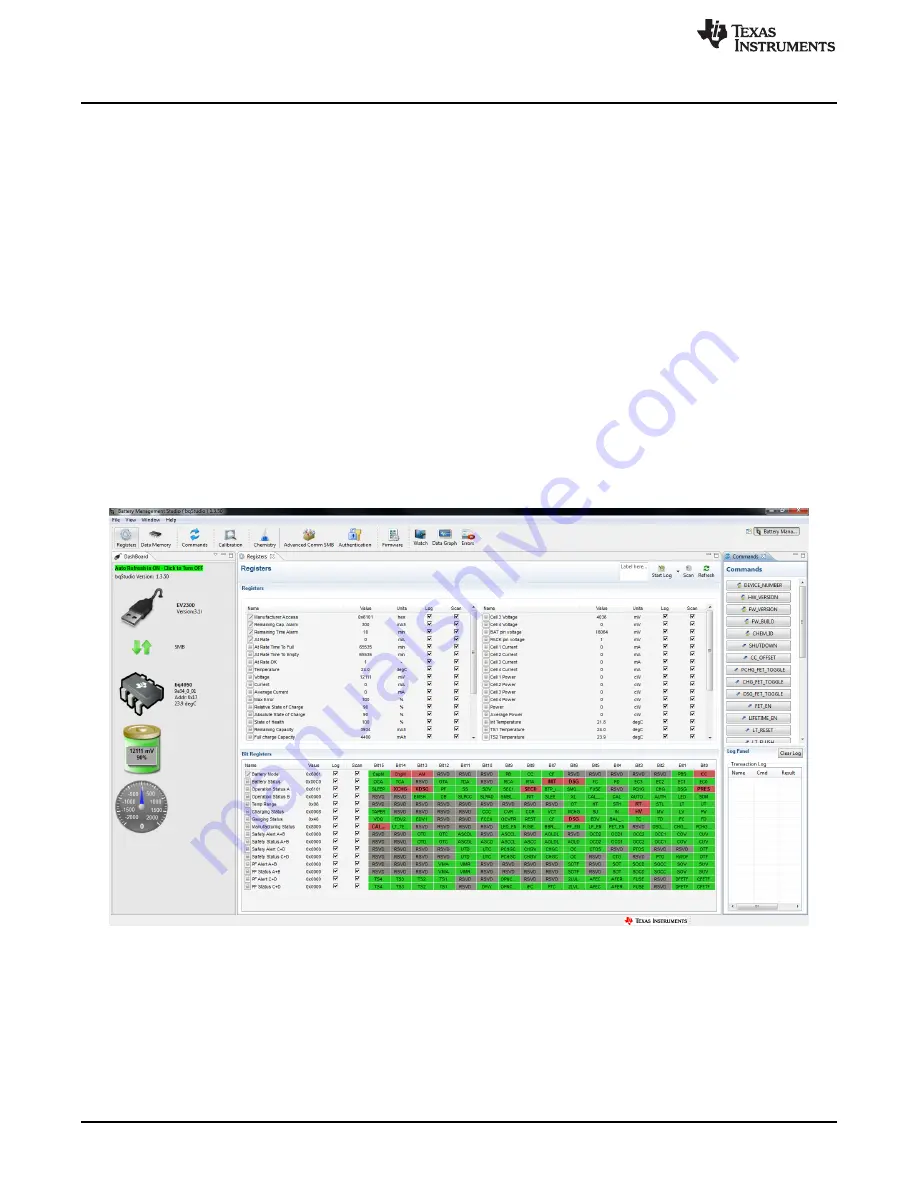
Operation
6
SLUUBF9 – March 2016
Copyright © 2016, Texas Instruments Incorporated
bq4050EVM-561 Evaluation Module
3
Operation
This section details the operation of the bq4050 bqStudio software.
3.1
Starting the Program
With the EV2300 or EV2400 and the bq4050EVM connected to the computer, run bqStudio from the
Desktop
or
installation
directory. The window consists of a tools panel at the top and other child windows
that can be hidden, docked in various positions, or allowed to float as separate windows. When bqStudio
first starts up the
DashBoard
, the
Registers
, and
Commands
windows should be open. Additional windows
can be added by clicking the corresponding icons in the tools panel at the top of the main window.
The
Scan
(continuous scan) or
Refresh
(single time scan) buttons can be clicked in order to update the
data in the
Registers
and
Data Memory
windows.
bqStudio provides a logging function which logs selected
Data Registers
last received from the bq4050.
To enable this function, click the
Start Log
button. The default elapsed interval is 4000 milliseconds, to
change this interval, go to
Windows
, select
Preferences
, choose
Registers
, and change the
Scan/Log
Interval
from 4000 to 1000 milliseconds. There is no need to log faster than 1 second as the gauge will not
update the registers faster than 1 second.
The
Registers
section contains parameters used to monitor gauging. The
Bit Registers
section provides a
bit-level picture of status and fault registers. A green flag indicates that the bit is 0 (low state) and a red
flag indicates that the bit is 1 (high state). Data begins to appear once the
Refresh
(single-time scan)
button is selected, or it scans continuously if the
Scan
button is selected.
Figure 3. Registers Screen





















